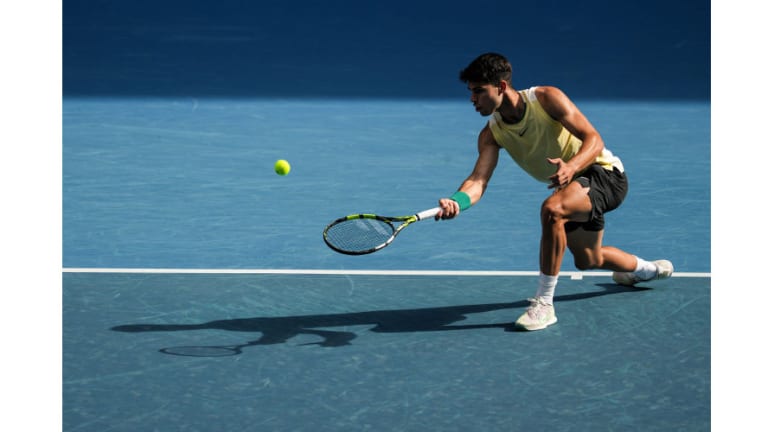However, even though the off-arm helps set the racquet during the trunk turn on a forehand, it leaves the racquet and stays in front of the body. This means you have to implement a more elaborate grip change without any assistance, which can be tricky. And if you don’t do it correctly, there’s a good chance you’ll brick the drop shot. It is possible to change grips early in the backswing with the help of the off-hand, as you would when approaching the net to volley. But this technique is suboptimal for a couple of reasons.
First, the drop shot is a highly spontaneous tactic. It’s not often you know for certain that it’s the next shot in your point construction. You need to quickly take stock of such things as court positioning—yours and your opponent—and the quality of the incoming shot. Doing these assessments typically takes until the last split-second to decide whether you’re going to try the drop shot.
Second, if you take the racquet back with a continental grip, an astute opponent will immediately recognize you’re not going to hit your typical forehand drive. The face will be much more open. Instead of holding ground, or even ceding court—which often happens when an opponent is readying to unload on a big forehand—they will move forward. Now you’ve given up the element of surprise which is so key for delivering a winning drop shot.
Watch Alcaraz set up as though he will pummel one of his patented heavy forehands, and as he brings the racquet forward, he makes a subtle grip change to the continental grip. He delays as long as possible not to tip his hand. His opponents get such a late jump on the ball that it doesn’t even have to be a perfect shot to get the job done.
This is something you can actually work on with shadow swings off the court. Take the racquet back as though you’re going to hit your regular forehand. As you start the racquet forward, practice making a gradual shift in your grip. By the time the racquet is just in front of your dominant hip, it should be in the proper drop shot grip. Keep repeating until the feeling becomes second nature. That way, you won’t have any hesitation to try the shot in the heat of competition.
And just like Alcaraz, you’ll be able to beat your opponents with both speed and subtlety.
